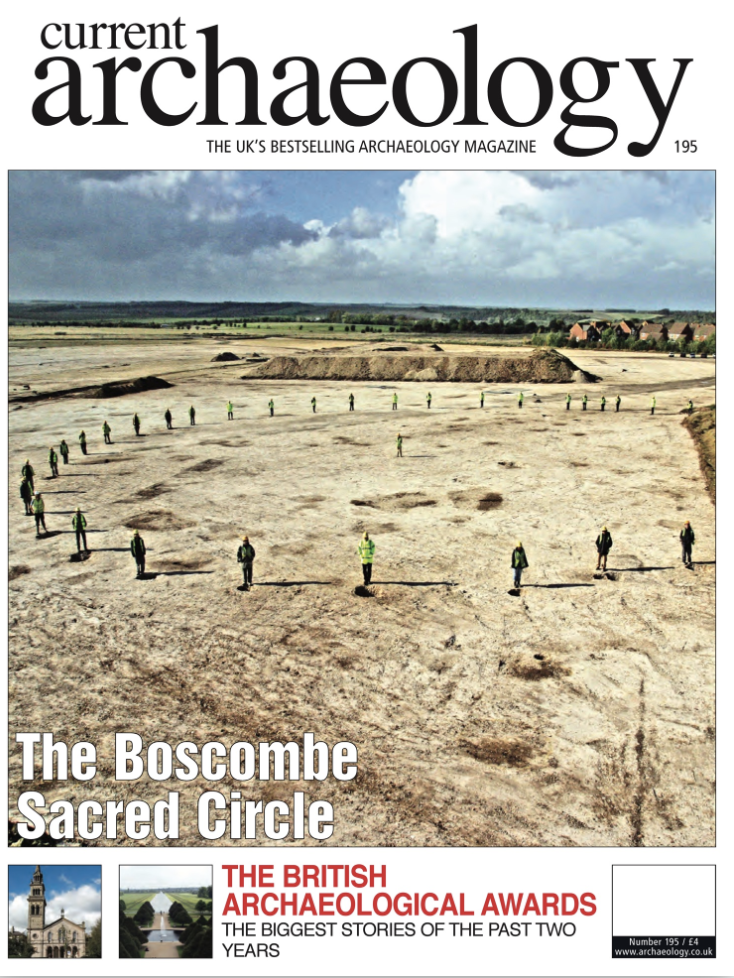What are the outstanding achievements in British archaeology? The British Archaeological Awards set out every two years to survey the field of archaeology and pick out some of the outstanding work done. This issue of Current Archaeology is devoted to the Awards that reached their climax in Belfast on 8th October 2004.
There are fourteen awards in all, and these are the subject of a supplement at the end of the magazine. It is fascinating for us to discover the many aspects of archaeology that are highlighted by the awards, and they make good reading too.
But in the main body of the magazine we look at our own Current Archaeology award. This is a new award devoted to the achievements of ‘developer funded’ archaeology. Thanks to the government guidance known as PPG 16, this now accounts for well over 90% of all the spoil moved by archaeologists in this country. But just what they have been finding? In this issue, we put them to the test.
We discover how excavations at Byker and Throckley in Newcastle have turned the old idea that Hadrian’s Wall was more customs post than defencework on its head. A dense thicket of spikes may have run the entire length of the Wall – making the north British frontier a truly formidable barrier. We summarise the evidence with the help of a backward look at Caesar’s Gallic War siege-lines.
Then we return to the great barrow at Gayhurst in Buckinghamshire (CA 191) to unravel an extraordinary story locked up in the great haul of cow bones from the barrow ditch. The story concerns a funeral on the grandest scale the Early Bronze Age could manage as a great cattle baron was laid to rest.
When did ironworking reach Britain? The British Iron Age is supposed to start in c. 700 BC, but at Hartshill in Bedfordshire archaeologists have found evidence for smelting and smithing as early as the 10th century BC. We describe the discoveries and, with the help of ancient metals expert Tim Young, get to grips with the technology.
The small town of Leominster in Herefordshire had, until recently, hardly been touched by archaeologists. But there was a medieval priory there and it had been a great centre of the Anglo-Saxon Church before that. Excavations have now begun. Is a mysterious rotunda in the medieval cloister the first fragment of the Anglo-Saxon town to be revealed?
After the Amesbury Archer (CA 184) and the Boscombe Bowmen (CA 193), we now have the Sacred Circle. Wessex Archaeology may be finding answers to the question: why were the Archer and the Bowmen buried were they were? We have a brief report on this, and also, from Corrstown in Northern Ireland, a description of a newly discovered Middle Bronze Age village of 50 houses – densely packed, well ordered, and all apparently occupied at the same time.

